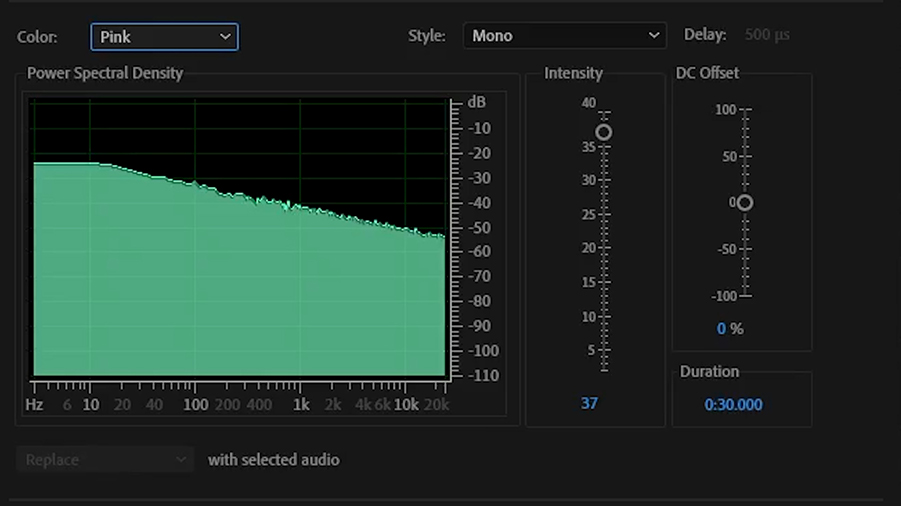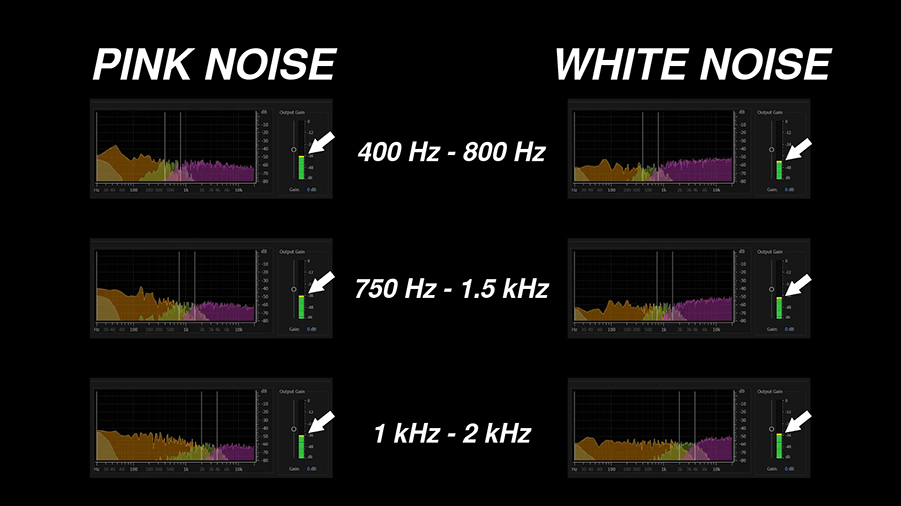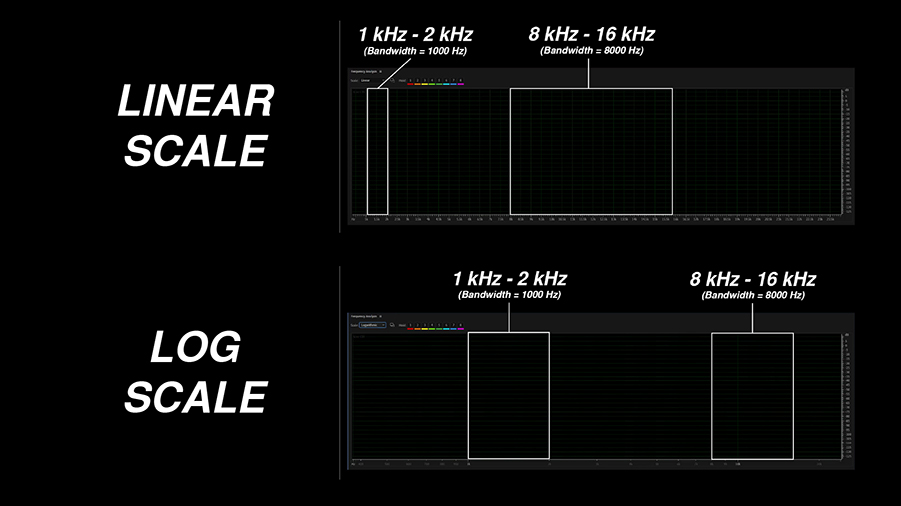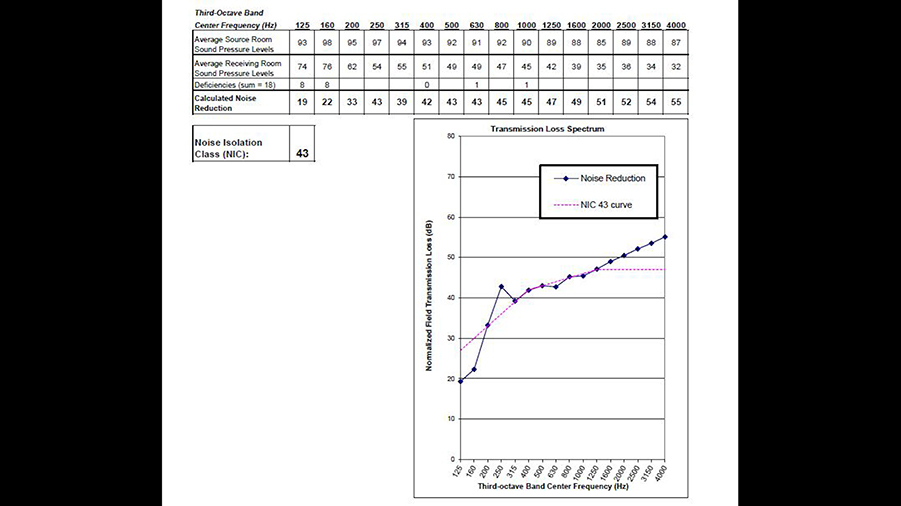So, what is the difference between white noise and pink noise? How do they relate to sound systems, music, and the way humans perceive sound? In this video, I’m answering all of these questions.
What Is The Difference Between White Noise & Pink Noise?
White noise consists of equal energy per frequency and pink noise consists of equal energy per octave. This results in pink noise sounding a bit darker than white noise, because more energy is allocated to the lower frequencies in pink noise while more energy is allocated to the higher frequencies in white noise.
When I first learned this, it was explained to me this way:
The octave between 1 kHz and 2 kHz is 1000 Hz wide, whereas the octave between 8 kHz and 16 kHz is 8000 Hz wide. This means that if energy were distributed evenly to all frequencies, the higher octaves would contain more energy than the lower octaves.
If you compare these two signals on a frequency graph, it will help you to get a better understanding.
White Noise

You can see that white noise forms a straight line from left to right, indicating that each frequency contains the same level of energy.
Here is what white noise sounds like…
Pink Noise

Pink noise, on the other hand, forms a slanted line with more energy allocated to the lower frequencies. For this reason, pink noise sounds a bit darker than white noise…
That’s because there is equal energy per octave in pink noise. Remember – an octave is a doubling in frequency. So, the octave from 100 Hz and 200 Hz has the same level of energy as the octave from 1 kHz to 2 kHz.
Equal Energy Per Frequency vs Equal Energy Per Octave
Using a multiband compressor plugin, I’m able to listen to only the frequencies between these two boundaries.
When playing pink noise, the level is the same no matter which octave I listen to. It could be 400 Hz to 800 Hz, 2 kHz to 4 kHz, or 750 Hz to 1500 Hz. No matter which octave we listen to, the level is the same.
When I play white noise, the level will be greater in the higher octaves because there is more energy concentrated in the higher octaves relative to the lower octaves.

It’s important to understand that there are really infinite frequencies in all octaves when you consider the endless decimals between each whole number.
In white noise, not only is there equal energy at 300 Hz, 301 Hz, and 302 Hz for example, but the energy is also evenly distributed to the infinite frequencies between them (such as 300.1 Hz, 300.01 Hz, and so on…).
There are also infinite octaves. 0.1 Hz to 0.2 Hz is an octave, 200 Hz to 400 Hz is an octave, and 3 GHz to 6 GHz is an octave. No matter how large or small, each doubling of frequency is an octave.
Pink Noise & The Way Humans Perceive Sound
As an audio engineer or music producer, I think it’s most important that you understand why pink noise is especially relevant to human hearing and how it can be used in audio production and acoustics.
Humans perceive frequency on a logarithmic scale, which makes pink noise a better choice for measurements and references related to human perception of sound.

In western music, there are twelve notes between 440 Hz (A) and 880 Hz (A). There are also twelve notes between 880 Hz (A) and 1760 Hz (A).
We perceive these intervals as equal, even though the first interval is much smaller than the second when viewed on a linear scale. The bandwidth of the first octave, 440 Hz and 880 Hz, is 440 Hz, while the bandwidth of the second octave, 880 Hz and 1760 Hz, is 880 Hz.

This has a few implications that are important to us as audio engineers…
Using Pink Noise For A Well-Balanced Mix
First of all, it gives us an idea of what a well-balanced mix would look like on a frequency spectrum analyzer.
If you try to make the frequency balance of your mix perfectly flat, it may end up sounding a bit thin. Instead, you will probably find a frequency balance resembling pink noise much more pleasing. Of course, I would ultimately recommend just using your ears to find a good balance based on the genre and your taste.
Using Pink Noise For Acoustical Measurements & System Tuning
Secondly, when making acoustical measurements or tuning sound systems, we will generally use pink noise.
If you’re interested in learning about a free software you can use to measure your sound system with pink noise, check out my post about Room EQ Wizard.
With acoustical measurements or sound isolation measurements, our primary concern is usually human perception. So, most tests are reported in octaves or third-octaves. Therefore, using a test signal with equal energy per octave, such as pink noise, is preferred.
Take for example a sound isolation measurement. We generally care about perceived isolation more than absolute. So we report transmission loss in 1/3 octaves and because we report in 1/3 octaves we use pink noise for a test signal.

How White Noise & Pink Noise Are Generated
One question I had while researching this topic to make this post for you was, “How are white noise and pink noise generated?”. Here’s what I found…
White noise is the random noise that is generated by electronic devices. If you connect a resistor to an amplifier and turn up the gain, you’ll hear white noise.
Pink noise also occurs in nature, such as the sound of a waterfall.
A friend of mine who teaches acoustics and works as an acoustician put it this way…
“If you are generating the noise by moving something with mass (like water) you get equal energy per octave, which is pink. If you are generating a random event without the inconveniences of inertia (resistor noise, flipping a coin) you get equal energy per possible outcome, which is white. Since white noise is trivial to generate electronically or computationally, artificial pink noise is usually white noise with a low pass filter.”
